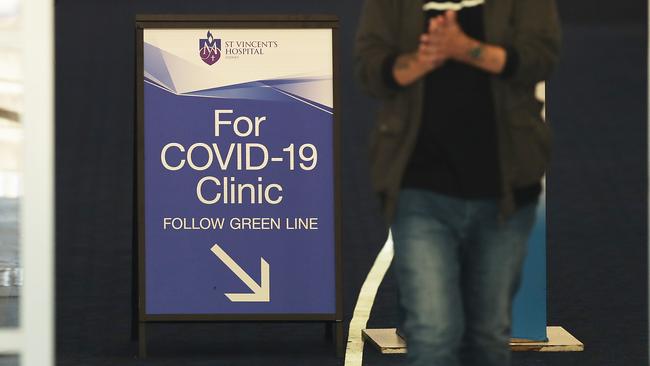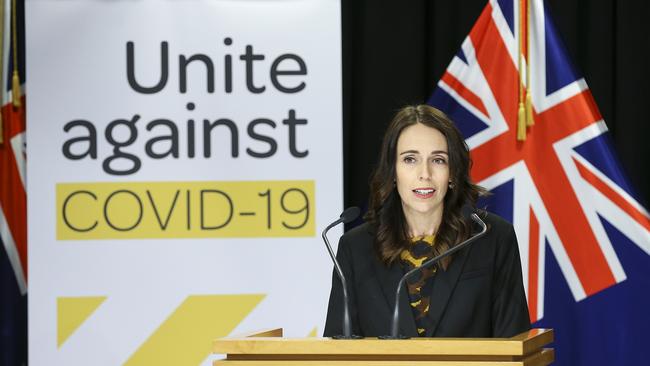How digital analysis will defeat the virus
As the smartest generation, we can use our fear and skills to gather accurate information and defeat COVID-19.

People bought toilet rolls and rice to prepare for that earlier version of Armageddon. Y2K, of course, was a fizzer. Nothing happened. And yet here we are just over 20 years later, and we are either in or very much spiralling towards this very world.
The bug this time doesn’t have a trendy acronym like Y2K or GFC or N1H1, but rather is a composite of coronavirus disease 2019, hence COVID-19.
On Saturday morning this virus is likely to have infected close to a quarter of a million people globally (if not more) and caused the deaths of 11,000, if not more. In a week’s time, these numbers are likely to have at least doubled. In the first three months of this calamitous year, a single spiky rogue virus has changed the world — and the way we live — forever.
I have no doubt that humanity will survive this crisis, but its effect on a largely unsuspecting and ill-prepared generation of (Western) humanity will be profound. From 2020 onwards, we will divide time (in popular culture) into a binary world of Before Corona (BC) and After Corona (AC).
The last time anything like this happened was just over a century ago, with the advent of the Spanish flu, which claimed perhaps as many as 15,000 Australian lives in a nation of just more than five million people. This is equivalent to 75,000 deaths in today’s Australia, with more than 25 million residents.
But of course the Spanish flu was way back then; we’re far better prepared; we have better healthcare, sanitation, information systems and a greater capacity to work from home. Factory workers couldn’t work remotely in 1919, where today’s office workers can.
The worst of Australia’s Spanish flu unfolded in the winter of 1919, delivering a death tally equal to the number lost in each of the four years of World War I. Australia’s Spanish flu experience was like the armistice never happened because the killing continued at roughly the same rate, but just on Australian soil. And, from what I have read, while all age groups died of the Spanish flu, the main focus was the young, aged 25-39.
The coming of the coronavirus may have been foreshadowed by some such as Bill Gates in his 2015 TED Talk, but not by today’s collective humanity. Until last month, the scariest future that we could contemplate wasn’t all-out nuclear war but rather the (remote) possibility of a climate-induced extinction within 12 years.
Now, just a few weeks later, climate, as well as a range of social issues, has been relegated to a much lesser ranking on the global threat-o-meter as survivalism reorders the economic landscape and human behaviour.
Sadly, the daily list of soldiers killed during WWI pummelled the Australian nation into a kind of acceptance that this death rate was the new normal: young lives offered up in battle or in disease.
A century later, the coronavirus threat has appeared out of nowhere. We Australians are conditioned to accepting the hardship of drought, bushfire and even flood, but not this. Nothing quite so universal. Not on this scale. And not at the tail end of a 30-year streak of unbroken prosperity.
Plus, we are told, the coronavirus is especially virulent among the elderly. The virus is contracted by human contact, which means it is picked up and multiplied in densely packed urban communities. That it should originate from China and spread effortlessly and quickly to other densely packed places such as South Korea, northern Italy and the cities of Iran is not surprising. That it should first cluster in the gateway cities of New York and the San Francisco Bay Area is also not surprising.
In this regard, Australia has a clear advantage. The low-density sprawl of our major and provincial cities gives us room to move, space in which to isolate, less scope to bump into others. Who would have thought that the very essence of late-20th century Australia — low-density suburbia — may turn out to be a decisive factor in mitigating the effects of a deadly 21st-century pandemic?
There are online tally boards of cases and deaths by country that keep a daily score between us and our vicious viral opponent. From what I can deduce, just less than half the confirmed cases have already recovered and 1-2 per cent die in countries such as Australia, Canada and, thus far, the US.
The death rate in Italy is much higher, at 8-9 per cent of confirmed cases, based on publicly available data. Other sources suggest the death rate per case rises with age, peaking at about one in six (roughly 15 per cent) for the over-80s in the developed world.

And so here is another advantage of Australia: we are a young nation with a relatively high birth rate that is continually being topped up with young, work-ready migrants. Just 4 per cent of the Australian population is aged over 80. This compares with 8 per cent for Italy and 9 per cent for Japan. So, deaths per case very much depend on the age skew of the country, as well as on the extensiveness of the testing program.
Just like war, managing a pandemic is a matter of making decisions in the moment based on imperfect data. Various reports suggest that the young (say people in their 20s) contract the disease, often unwittingly, and then spread the contagion to the more vulnerable elderly. Isolation of the elderly very much seems like the right policy at this point in the virus’s curve.
But this brings me to what I think is really important right now. I will leave the policy decisions to the politicians, and the medical advice to the experts. But what I think we need, and what I think will make a difference, is the setting up of better and more publicly accessible data capture systems.
For goodness’ sake, we (collectively) are the “digitally connected” generation. We have the skills and the technology to track and manage this virus.
The coronavirus pandemic is essentially a geo-demographic challenge of the highest order. We should have a daily upload of cases, deaths and recoveries in one central place that also tags and publishes metadata such as age, gender and postcode by case and death. Which age-based communities are most susceptible to infection and death? And which geographies are its favoured pathways into the community from our gateway portals?
We think we know how the virus spreads (from young to old) and how it enters a nation (via the airports), but where to from there? Where do we focus resources and tighten liberties in precisely the right places?
This battle is an issue of marshalling resources and educating the community to ensure that scarce resources are focused into the right areas. For example, precisely where should we direct a public disinfectant program?
By the time this virus infects, say, 5000 and more Australians (say, in two or three weeks), we should know its movements and the demography of its preferred targets (suburbs and workplaces).
Surely we, the smartest Australian generation, should be able to harness our collective fear, our collective energies, our collective determination to secure victory over this virus by doing whatever is necessary to track, manage and eliminate it from the Australian continent.
Bernard Salt is managing director of The Demographics Group; research by Hari Hara Priya Kannan.


The coming of the coronavirus is the event that we were promised, or threatened with, at the turn of the century. Back then, the viral threat was a dastardly computer bug known as Y2K that was going to bring the world to a halt, cause a breakdown in social cohesion and spiral everyone into a chaotic world of food riots, hoarding and mass panic.